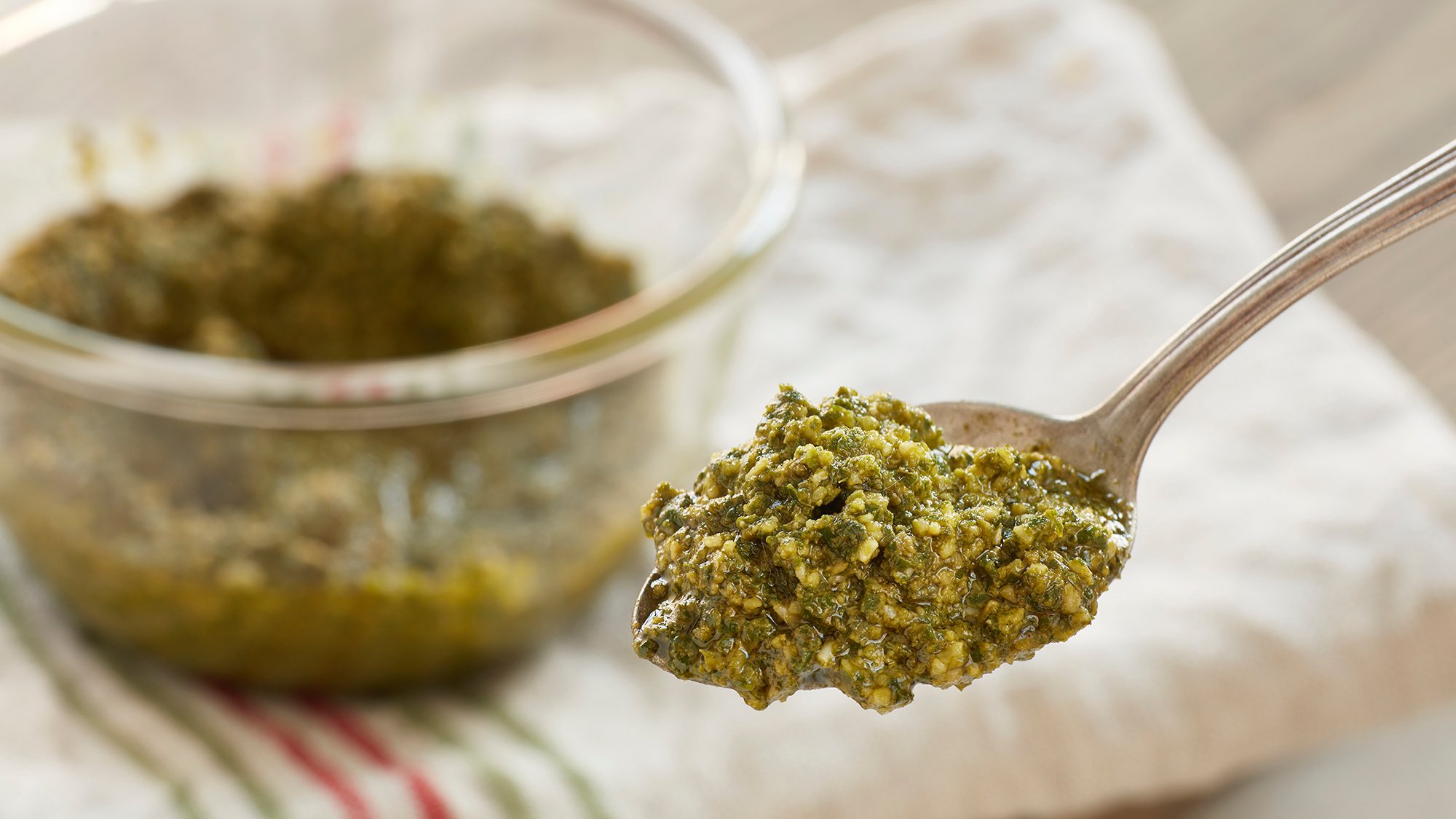In the '80s, when pesto began its inexorable march towards world domination, the word meant only one thing: green slime. That’s a little harsh, but c’mon; everywhere you turned—or at least in American restaurants—there was this lurid green sludge on pasta, on pizza, on bread, in soups. It was inevitably too garlicky, and often contained suspicious ingredients like lemon juice, supposedly there to keep the whole mess neon green.
I seriously love basil pesto. My freezer is filled with the yearly haul from my garden. I’m enough of a nerd that any pesto I make in the summer that is not destined for the freezer is made the old fashioned way, with a mortar and pestle. And I believe mine to be a superior exemplar, with small, tender basil leaves, some garlic, a few nuts, Parmigiano, good salt, and excellent olive oil. For freezing, I just process the basil, salt, and oil and top the container with a not-too-thin film of oil and freeze. I add the garlic, nuts, and cheese to each dish at the time of serving. So you can believe me when I say I love it.
But there is an entire world of pestos out there that contain things other than that canonical list. Pesto comes from the Genoese word pesta, meaning essentially, to pound or to crush. Right there you discover that the pesto that we think is the only pesto is, in fact, pesto alla Genovese.
But, taking as our clue the fact that this is a sauce from Genoa, one must assume there are other pounded sauces from other places.
Pesto alla Calabrese often includes dried oregano, hot chili powder, roasted red peppers, ricotta, and shallots. Walnut pesto has far less basil, and a lot of walnuts. Though still technically green, this pesto is more the muddy brownish green we try to prevent in the Genovese version. But, if you’re a walnut aficionado as I am, this is delicious though not objectively pretty. Pesto alla Siciliana, also known as pesto rosso or pesto alla Trapanese, includes lots of tomato, almonds, and a hint of basil.
There are versions filled with or accented by mint, cilantro, arugula, and there’s even a pesto from the legendary Judy Rodgers’ Zuni Cafe utilizing my hands-down favorite herb: sage. (Don't worry, the sage is poached in the oil, so it’s not at all like eating a handful of camphor.) If the idea of sage pesto appeals to you, by all means check out the Zuni Cafe Cookbook—which, by the way, everyone should own, if only to dream and seek inspiration.
I’m all for tradition. Some of my colleagues would even go so far as to call me old fashioned, which is a moniker I wear proudly. Still, I say this is a place to have fun and give into curiosity. Are you in the mood for the seasonings of Thailand? Pound a sauce of peanuts, garlic, ginger, fish sauce, oil, and some Thai basil if you have it. If not, steal a little frozen Genovese from your freezer. Smash some garlic, fresh oregano, hot chiles, oil, and maybe a touch of chocolate if you wish to scratch an itch for Mexican-ish flavors.
Obviously, I’m not suggesting this is Thai or Mexican. But what I am saying is basil was available in abundance in Genoa, and hot peppers were growing like crazy in Calabria. Take a leap and make your own pesto using what you have and what you like. Don’t worry, experimenting and playing and improvising are fine—let your freak flag fly. We will always have Genoa.
Get some pesto inspiration:
Rigatoni with Lemony Kale-and-Pecorino Pesto
Spaghetti with Sun-Dried-Tomato-Almond Pesto
Hazelnut-and-Green Olive Pesto
Spicy Grilled Shrimp with Yuzu Kosho Pesto
Spaghetti with Radish-Greens Pesto
This article was written by David McCann from Food & Wine and was legally licensed through the NewsCred publisher network. Please direct all licensing questions to legal@newscred.com.








